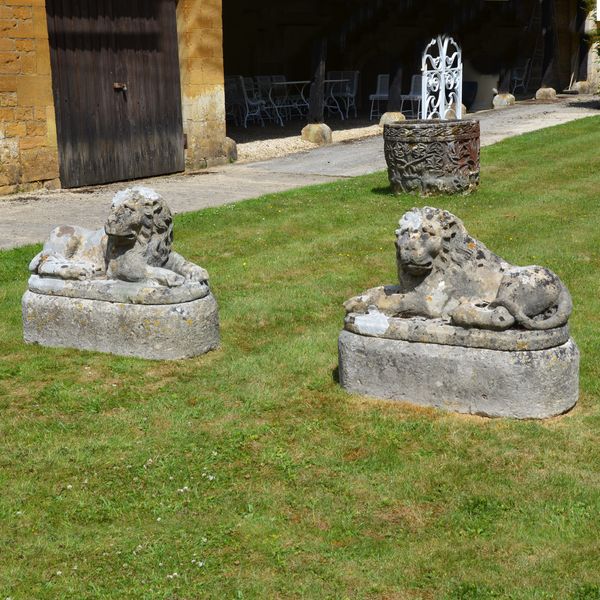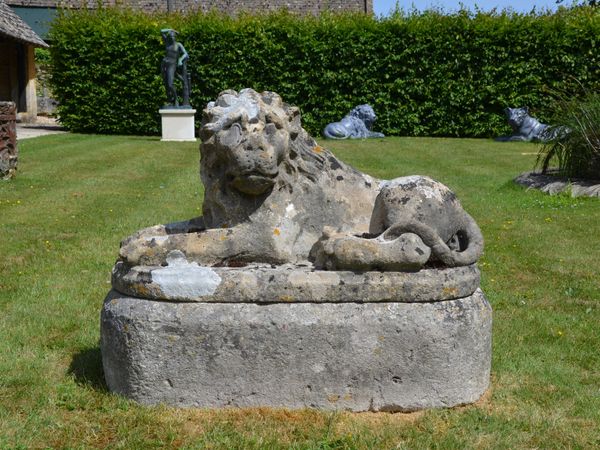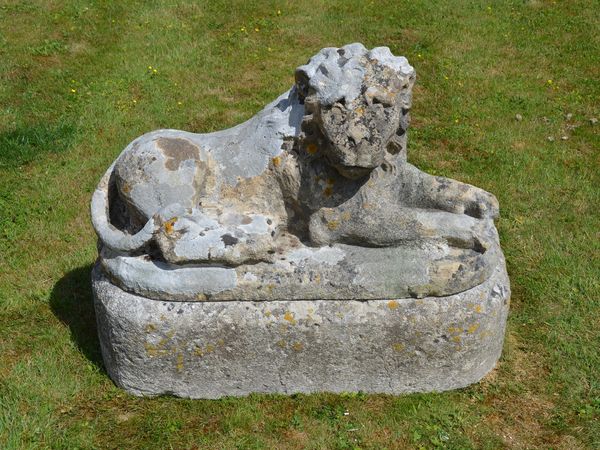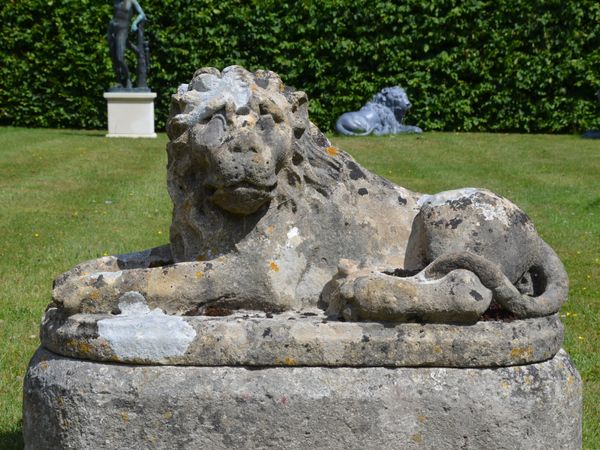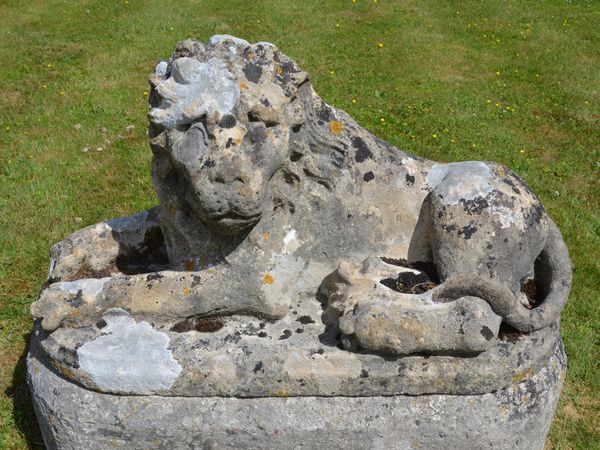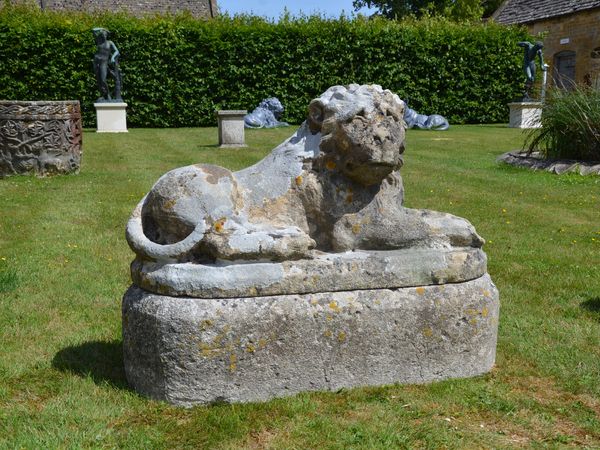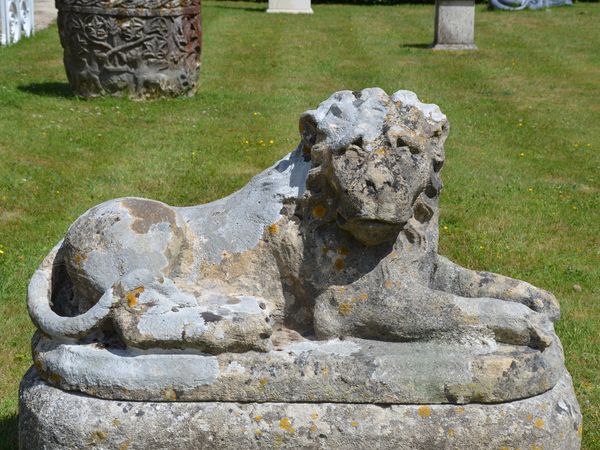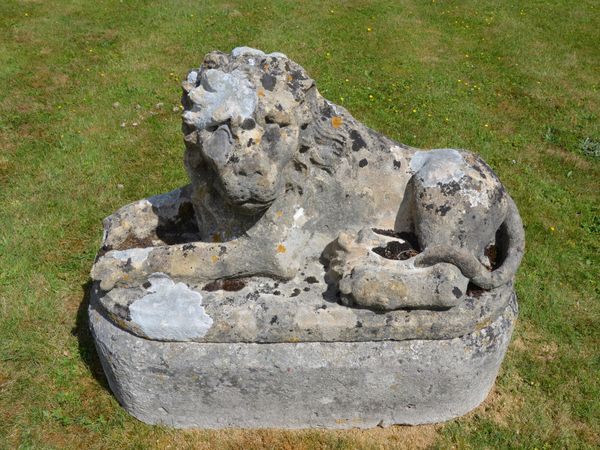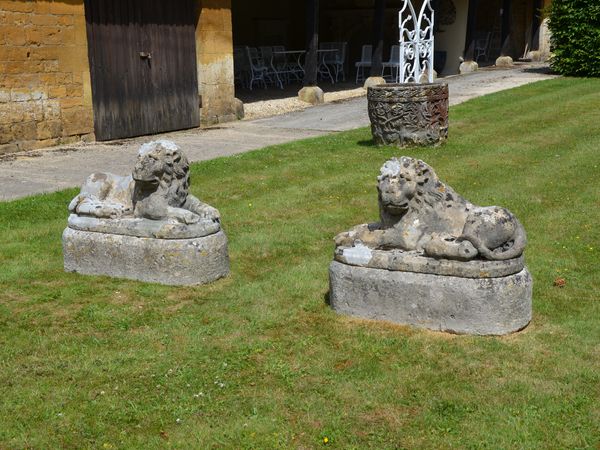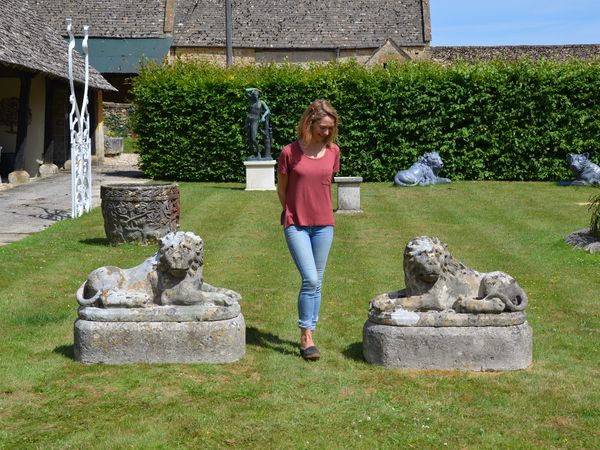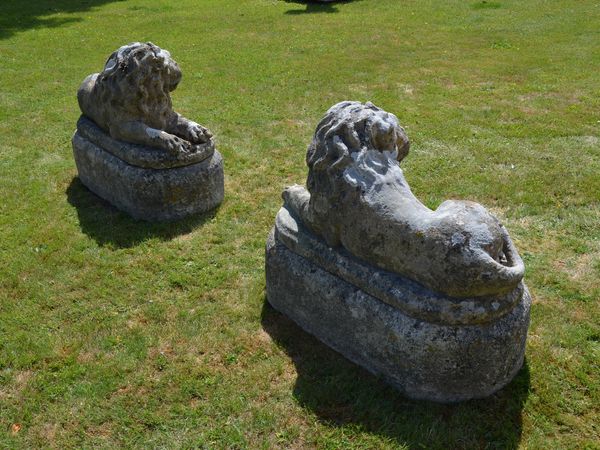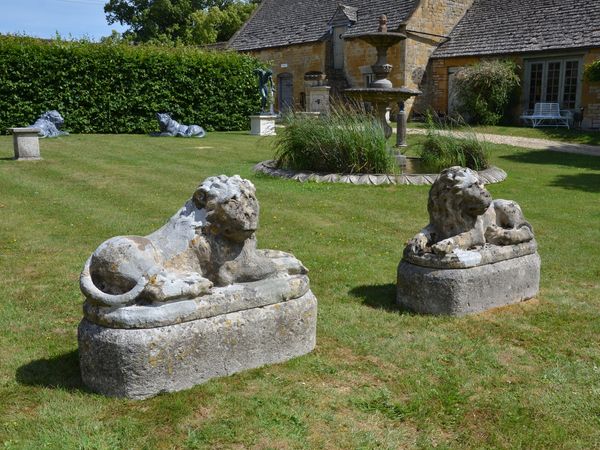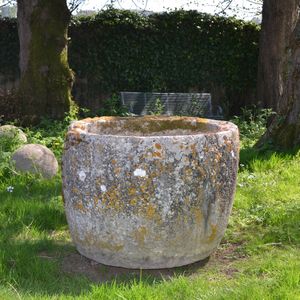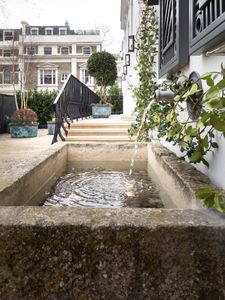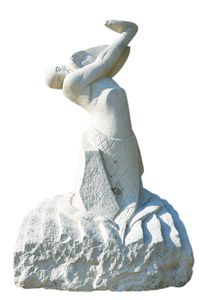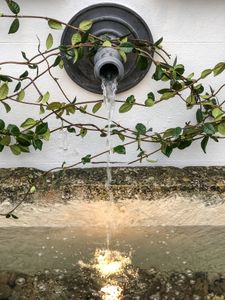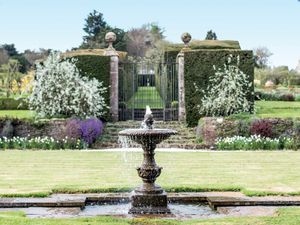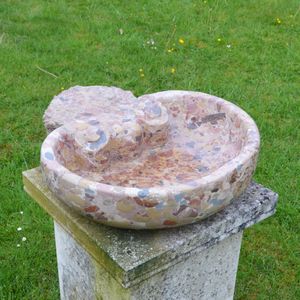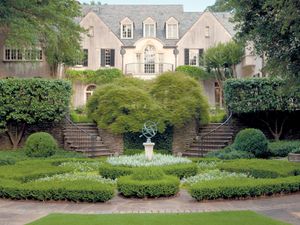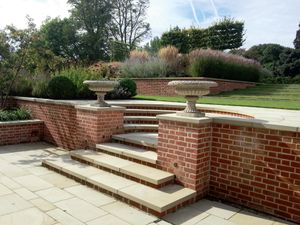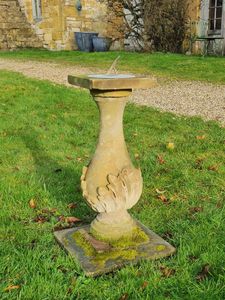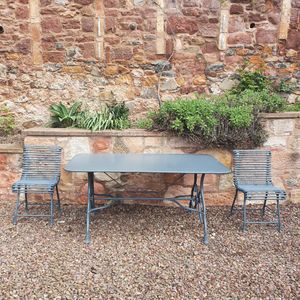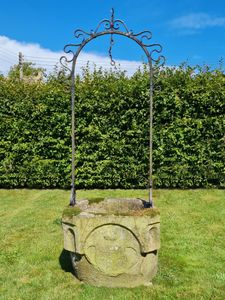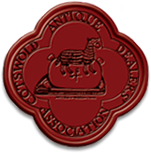A pair of carved limestone recumbent lions
A pair of carved limestone recumbent lions
Circa 1820
Stock Number: 14120/GSO
Height
82.00cm
[32.28 inches]
Width 104.00cm [40.94 inches]
Depth 48.00cm [18.90 inches]
Width 104.00cm [40.94 inches]
Depth 48.00cm [18.90 inches]
Sold
The model for this pair of lions can be traced back to an unknown sculptor working around 1740 for William Kent on behalf of Lord Burlington at Chiswick House. The carved Portland stone lion and lioness, still extant either side of the of the Exedra (a curved garden feature or folly), are larger in size than the pair we have here, and one can see that the actual model is the lion only. It is then interesting to note how later, after 1760, John Cheere produced in lead copies of the Chiswick House models, with examples to be seen at Castle Hill, West Wycombe, Heaton Hall, Anglesey Abbey and Quenby Hall. It is also interesting to see that the position of the tail for the Lion - over not under the leg - is replicated here in these carved bath stone examples, in contrast to the Chiswick Lion which is tail under.
When one starts to look you see this model replicated in various materials e.g. plaster (gilded and painted) and porcelain (Bow and Plymouth), throughout the 18th century and later with this pair, probably carved in the Bath Region around 1820.
Restoration required to one front section.
PROVENANCE
Isabel and Julian Bannerman - Hanham Court
When one starts to look you see this model replicated in various materials e.g. plaster (gilded and painted) and porcelain (Bow and Plymouth), throughout the 18th century and later with this pair, probably carved in the Bath Region around 1820.
Restoration required to one front section.
PROVENANCE
Isabel and Julian Bannerman - Hanham Court




